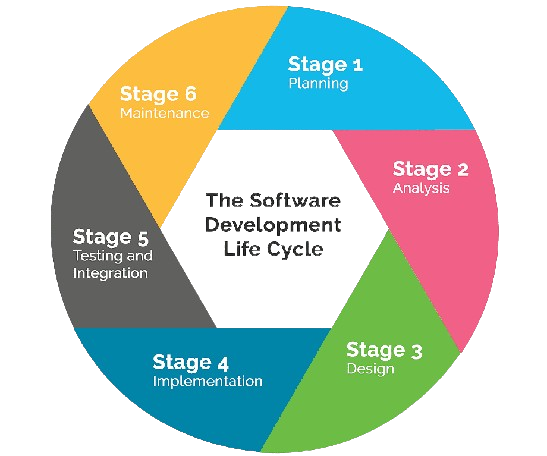admin2024-03-16T09:54:14+05:00
Software Development Life Cycle (SDLC)
In software development, a clear vision from the start is crucial for success. Managing the complexity of such projects requires meticulous planning, groundwork, and skilled management. The Software Development Life Cycle (SDLC) serves as a proactive guard, identifying and addressing development issues early on, saving time and resources. It not only identifies problems but also outlines a clear path for success from the project’s inception. For developers, understanding different SDLC models is essential for selecting the right approach based on project needs and business requirements.
Curious about the Phases of SDLC?
In this blog, we’ll provide a comprehensive guide to the seven stages of SDLC. By the end of this read, you’ll understand the significance of this approach and gain insights into noteworthy SDLC tools worth considering.
A Quick Overview of SDLC
SDLC, or Software Development Life Cycle, is a structured process guiding the development, maintenance, replacement, or improvement of specific software. It involves a detailed plan outlining how these processes will be executed. In practical terms, SDLC embodies best practices for creating technological solutions, enabling teams to produce high-quality software that meets or exceeds customer expectations.
Roadmap to 7 Key Stages of SDLC
While the number of SDLC phases may vary based on methodology and team preferences, common stages include Analysis, Planning, Design, Development, Testing, Deployment, and Maintenance. Each phase plays a crucial role in ensuring a systematic and effective approach to project completion.
Key Role of Analysis in Software Building
The analysis phase is the starting point in software development, where experts gather specific requirements from customers and analyze business needs. This phase ensures that the final solution aligns with customer expectations and determines project feasibility.
The Significance of Planning
During the planning phase, the project scope is defined, and solutions are identified. A detailed project plan is crafted, organizing tasks and resources needed to shape the project structure. This phase sets a clear direction for the project.
Architecture & Design in Software Crafting
The architecture and design phase involves high-level and low-level design steps, defining the software’s future architecture and functionality. This phase also includes database specification, outlining data management and storage.
Bringing Ideas into Development Phase
In the development phase, project requirements and prototypes are transformed into an actual solution. Engineers craft code using relevant technology, essentially building the entire system.
Putting Software to Test
During the testing phase, all pieces of code undergo rigorous testing to verify and validate the software product. Testers ensure that the software behaves as expected and identify any bugs or defects.
The Essential of Software Deployment
Software deployment marks a crucial juncture in SDLC, where meticulously crafted code steps into the real world. Post-deployment, regular maintenance keeps the software agile, adapting to feedback and evolving requirements.
Maintenance
The maintenance phase focuses on making necessary upgrades, enhancements, and changes to the system, seamlessly integrating new features into the operating software.
Why Do You Need SDLC?
Implementing SDLC methodology influences the development process and outcomes significantly, offering benefits such as goal alignment, structured progression, continuity, and adaptability. SDLC simplifies software development, ensuring a smooth experience for users and project stakeholders alike.

